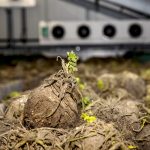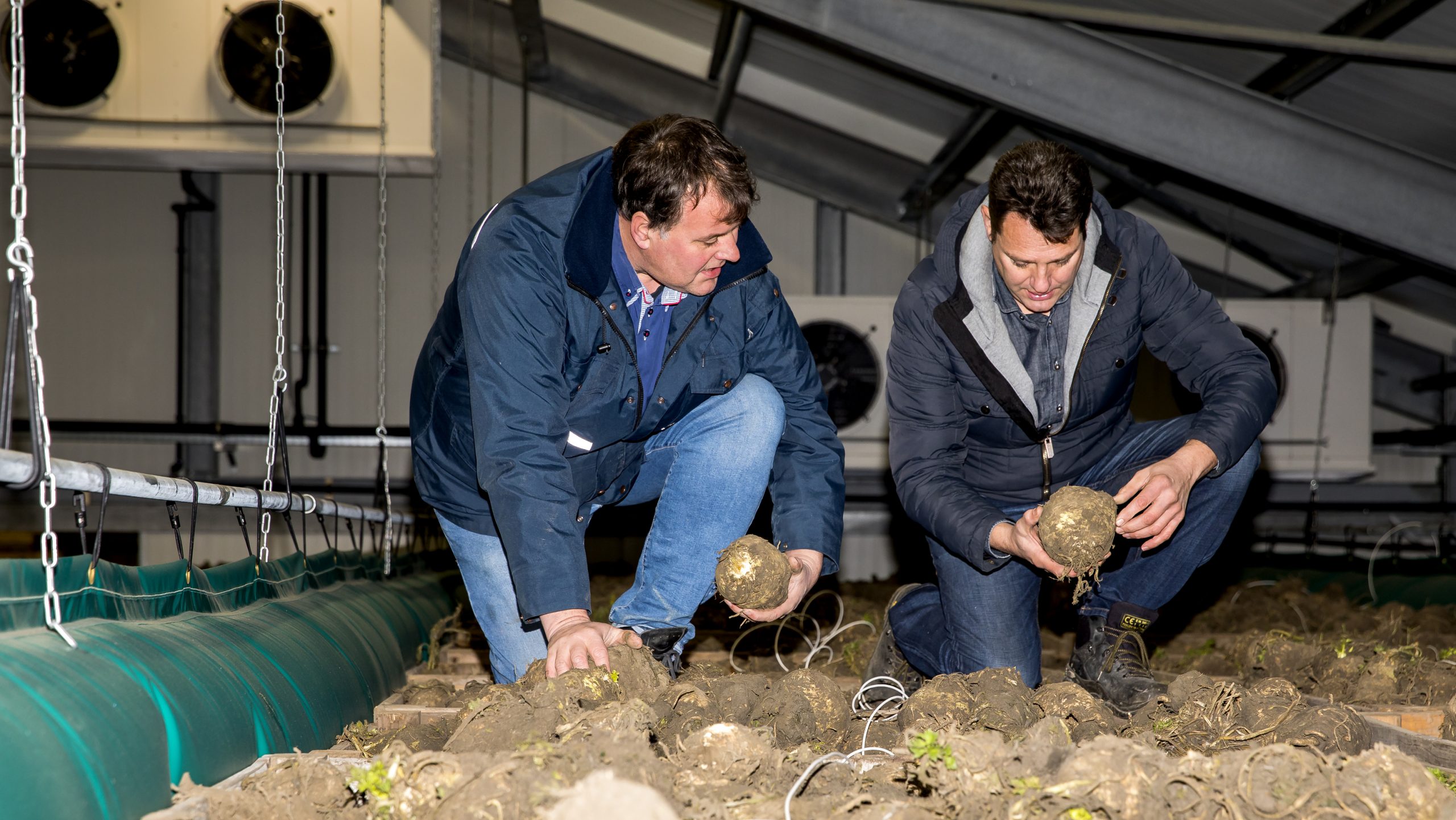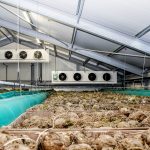
Just before the start of the new storage season, Equans installed a CO2 refrigeration system in Jan Goense’s multifunctional storage rooms. The system ensures that celeriac, carrots, onions and potatoes can dry and rest in optimal conditions. The arable farmer from Noordwelle can now enter the storage season with an easy heart. The CO2 installation is more energy efficient, safer for his products and also future-proof.
For his new storage rooms, Goense was looking for an energy-efficient refrigerating system which uses a natural refrigerant. The arable farmer was already talking to two other companies when he received a call from Frank Vanaert, project manager at Equans. ‘I didn’t actually need to start talking to another bidder, but it immediately felt right,’ says Goense. ‘Frank knew what he was talking about. While the competitors still had to build the first CO2 refrigerating system, Equans had already gained plenty of experience with it since 2013. Furthermore, the quote arrived the next day. The guy knows his business.’
For Vanaert, CO2 was a totally logical choice: ‘The natural refrigerant CO2 is currently getting a lot of publicity. Synthetic refrigerants will be phased out in the coming years. The scarcer these substances become, the higher the price.’
Keeping 1300 crates cool
In December 2017, Equans connected Goense’s multifunctional storage rooms to the new mechanical refrigerating system. Soon afterwards, the first agricultural products went into storage. While the 2 evaporators in the one storage room keep around 600 stacked crates containing 720 tons of celeriac cool, the capacity of the 3 evaporators in the other storage room is even bigger. Here, 960 tons of celeriac in 800 crates enjoy the stable environment. At the same time, the system can accommodate another 2 refrigerating units. Useful if Goense wishes to expand his storage capacity.


‘Thanks to the mechanical refrigeration, I don’t have to use outside air. That’s becoming more and more important in agriculture because we are increasingly experiencing periods when the outside air is too warm. It’s now winter, but 10°C. I’m glad I don’t have to use that warm air any more. I’d have seen my products drying out in front of my eyes,’ says Goense. ‘Now I can adjust the settings to optimal conditions. When the products first go into storage, I need a high refrigerating capacity. This must happen as quickly as possible to kill bacteria. During storage, a certain temperature and moisture control is crucial. Celeriac and carrots do particularly well in high humidity.’

And the energy consumption? Vanaert: ‘CO2 guarantees high efficiency and low energy consumption. In practice, the system still has to prove itself. But calculations show that consumption will be 20 to 25% lower than with a system using a chemical refrigerant. That’s also why Goense applied for the Energy Investment Allowance, a tax benefit which allows him to deduct a large part of the investment from the profit. The fact is that the system works very efficiently at a temperature below 15°C. And because the storage period of agricultural products coincides with the colder winter period, Goense will undoubtedly benefit.’


